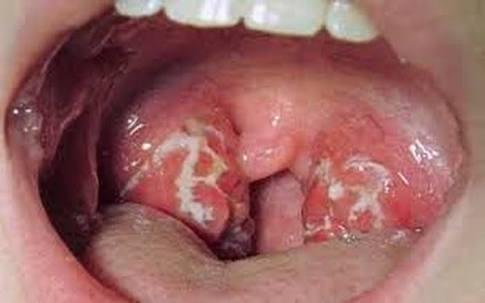Recognize the 10 Signs of Early Diphtheria Symptoms in Children
Recognize the 10 Signs of Early Diphtheria Symptoms in Children
The signs, characteristics, and symptoms of children affected by diphtheria disease should be known by every parent. Because diphtheria including dangerous diseases that are highly contagious and can be fatal to lead to death.
Diphtheria generally affects toddlers and children in the age range of 1-9 years, but some cases of diphtheria can also occur in infants, teenagers, even adults.

And on this occasion we will try to review what are the signs of children exposed to diphtheria and how to recognize it so that you are not late in providing the right handling.
10 Signs of Diphtheria-Infected Children That Must Be Known Early May
Here are 10 signs of children exposed to diphtheria that you must know:
- Sore throat
The first sign of a child with diphtheria is experiencing pain in his throat.
As a result the child will experience pain at the time of swallowing food.
Indeed, not all sore throat is a sign of your child exposed to diphtheria, but at the time of diphtheria outbreak is struck as it is today so it never hurts to be vigilant.
2.White membrane appearing Gray throad and Tonsils
Characteristics of diphtheria in toddlers and children the next most common is you will see a thick membrane of white or gray on the throat and tonsils.
This membrane is called the pseudomembranous membrane.
The pseudomembranous membrane is formed from a pile of cells that die from being destroyed by the venom of diphtheria. Sometimes it can also appear in the nasal cavity.
This membrane is very attached to the underlying tissue, so if lifted / exfoliated will bleed.
See examples of throat images of children affected by diphtheria below:

The appearance of a gray membrane in the throat is the easiest way to recognize diphtheria in children.
If you see this to your child, then do not be delayed again to immediately go to the doctor or the nearest health service unit.
3.Fever
The earliest symptoms of a child with the most common diphtheria disease are fever.
Fever of children affected by diphtheria is very typical, usually not too high heat (± 38o C) but sometimes accompanied by chills.
4.Neck Becomes Swollen
In addition to causing inflammation in the throat that causes pain during swallowing, diphtheria can also cause swelling of the lymph or lymph nodes.
It is characterized by the occurrence of swelling in the neck or often referred to as bull neck.
5.Difficult Breathing and Sound Being Hoarse
Symptoms of diphtheria in the next child is a change in sound in children accompanied by difficulty breathing.
Children exposed to diphtheria will experience impairment of the respiratory system, this occurs because the toxins from diphtheria bacteria that continue to destroy healthy cells also damage the respiratory nerve.
Children exposed to diphtheria often produce distinctive sounds such as snoring (stridor) due to airway constriction.
6.Rashes appear on the skin
Symptoms of diphtheria in children can also be accompanied by the appearance of rash on the skin.
The rash due to diphtheria disease is very distinctive, usually reddish and causes the skin to become inflamed.
In severe cases, especially in the type of skin diphtheria (Cutaneous diphtheria) can appear quite severe ulcers to ulcers accompanied by a very painful feeling.
7.Coughing Hard
The characteristics of diphtheria in children can also be characterized by symptoms of a severe cough.
Due to diphtheria cough can cause pain and sometimes the patient will remove sektret accompanied by blood.
8.Colds With Typical Secretions
Children exposed to diphtheria can also experience a typical cold. At first snot (sektret) issued dilute, but gradually become thick and yellow-green and can be accompanied by blood.
9.Body Becomes Limp With Decreased Appetite
How to recognize the emergence of diphtheria in children can also be seen from the decrease in appetite accompanied by the body becomes weak.
10.Heart Pounding Irregularly
Signs of children affected by the last diphtheria disease that changes heartbeats become erratic.
Children with diphtheria may experience heart palpitations. This happens because the toxins produced by diphtheria bacteria can be carried by the blood and interfere with the work of the heart.
This phenomenon has been categorized as dangerous because diphtheria poison has reached the heart.
That's all I can discuss hopefully at another night I can discuss again health issues.
Do not go anywhere on my blog
